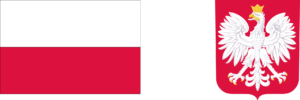Latvia’s long-standing demographic challenges deepened this year, according to new data released on November 12 by the Central Statistics Bureau (CSB) and reported by Latvian Public Media (LSM). The country has already lost around 10,000 residents in the first nine months of 2025, driven primarily by a persistently negative natural population change.
Births Fall, Deaths Still Double the Birth Rate
Between January and September 2025, Latvia registered 8,883 births, a drop of 10.9% compared with the same period last year. Only July surpassed the 1,100-birth mark, while January recorded the lowest monthly figure at 881 newborns.
During the same period, 19,186 deaths were recorded—slightly lower (by 3%) than last year, but still more than double the number of births. July showed the biggest year-on-year increase in deaths, rising by 117.
Although births exceeded 1,000 in each month of the third quarter for the first time since October 2024, this improvement was not enough to offset mortality levels. As a result, Latvia’s population shrank by 10.3 thousand people in the first nine months of the year. The overall population now stands at 1,827,800.
A Rare Positive Note: More Marriages
Despite the grim demographic picture, one indicator improved. Latvia recorded 8,833 marriages between January and September—an increase of 7.6% compared with last year. Most months saw higher marriage rates, except August and April.
Part of a Broader Central European Decline
Latvia’s demographic downturn is not an isolated case. Across Central Europe, from the Baltics to Poland, the Czech Republic, Slovakia, and Hungary, countries face declining birth rates, aging populations, and persistent emigration.
The combination of low fertility, rising life expectancy, and labor migration continues to drive population shrinkage throughout the region. Latvia’s numbers therefore mirror a broader structural trend affecting nearly the entire Central European demographic landscape.






